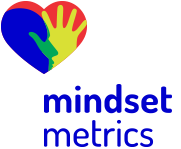Student success
Who succeeds in online Business Courses?
It’s a matter of asking, “What’s your WHY?” and “What’s your HOW?”
(Abbreviated) Abstract
Over a period of six years we had opportunity to investigate an aggregate population of 5,200 online Business majors at three primarily online universities. Data collected included scores from two self-report assessments, one is a DISC-based assessment and the other is a Motivators assessment.
Scores from both assessments have been mathematically interpolated into the Mindset Metrics model for ease of display and interpretation. For the sake of brevity, this abbreviated paper will explore only the GPA dimension, although other student data points were gathered.
The summary of the data used in the study are displayed in Figure 1, below.

Figure 1
Results
Statistically significant differences in Motivators
Three of the Motivators themes demonstrated statistically significant differences and were remarkably strong differences, as shown in Figure 2. Examining results of the top-performing (GPA 3.6+) online Business students, the investigators found three motivators themes in the ‘Innovation’ motivator category that demonstrated strong statistically significant differences. Those theme categories included Self-Reliance, Knowledge, and Influence, and are displayed in Figure 3. In order of intensity, the response pattern showed a drive toward Knowledge, i.e., an appetite for learning.

Figure 2
A drive toward Self-reliance, i.e., taking care of self before others. A drive toward Influence, i.e., a desire to persuade others. While these drives are observed within the populations of online Business major students, these drive factors may also be observed in the greater business community. Please note, that the investigators have found substantial differences in the Motivators between various major fields of study whether online or brick and mortar classes. This study explores business majors only.
Regarding the lower-performing (GPA 0.0 to 2.9) online Business students, the Motivators themes with the statistically significant differences emerged on the ‘Tradition’ motivators end of the scale. They include: Helping, i.e., a drive to help others, and put others before oneself; Practicality, i.e., a drive to learn the minimum of details and maintain a big-picture view; and Supporting, i.e., sustaining group processes without the need for power or control. In reviewing other results from the DISC and Motivators assessments, these themes seem to present as lesser important to typical scores on the same assessments when given to a broad base of business professionals.
A comparison of the statistically significant differences between the two groups is presented below in Figure 2. The differences are remarkable and present a clear set of measurable differences between the two groups.
Interpretation:
The Drivers & Motivators of Success for online Business Students


What is most remarkable to observe is the robust statistical significance across this lens of this comparison. This information can be of enormous value to college counselors and for the Business departments of both online and brick & mortar colleges. From this data, three motivational drivers emerge as primary drivers of online success among Business majors.
1.
A drive for Knowledge and an appetite for continuous learning. This may translate to a stronger ability to focus on specific goals within each class, and the end-goal of a degree. The inquisitiveness also contributes to persistence to completion of courses and degrees.
2.
A drive for Self-Reliance and taking care of one’s own needs and agenda before others. This may also contribute to the ‘grit’ and perseverance by maintaining just enough ‘distancing’ from others in order to cover the academic responsibilities first. That might include foregoing a party or informal social event until homework and academic responsibilities are completed first.
3.
A drive for Influence and persuasion over people may be one of the criteria for success in business, and it emerges here among successful Business majors. As we observe the greater business community, we observe similar drive factors and motivators.
The implications of this information can assist both college counselors, and also the Business Departments of colleges and universities, especially as they market to potential online students. The author suggests crafting marketing messages that may resonate with the drivers and motivators of the successful online students. (More information and specific marketing message examples are provided in the full version of this report.)
Differences:
Statistically significant differences in (DISC) Behavioral Style
There are four Behavioral themes explored in the DISC assessments and statistically significant differences emerged in all four themes when comparing top- and lower-performing online Business students. The effect sizes were smaller than in the Motivators scales, but there were statistically significant differences nonetheless. The four scales of the Behavioral assessments contained the standard four dimensions of the DISC model, as represented in Figure 3, below. The top performing students (GPA 3.6+) showed a slightly higher Decisiveness, a lower Outgoing / interactive nature, and slightly higher sense of urgency and quality control.
The lower-performing students (GPA 0.0 to 2.9) showed greater indecisiveness, higher Outgoing / interactive scores, a slightly lower sense of urgency, and slightly lower quality control. The results of the lower-performing students is reflected in Figure 3, below.
A statistical comparison between the two groups is displayed below in Figure 3. While the effect sizes were smaller than in the Motivators scales, there is nevertheless a set of statistically significant differences across each of the four scales.

Figure 3
Interpretation:
The Behavioral style of successful online Business students
While only three of the seven Motivators scales showed robust statistical significance, all four of the Behavioral themes demonstrated significance. Although effect sizes were small in some cases, indicating subtle differences, there are nevertheless statistically significant differences. Additionally there are specific, observable and coachable results. On the Behavioral scale, (DISC-based) the successful online Business students showed these traits when compared with the lower-performing students:
1.
Slightly higher Decisiveness. This trait may assist in personal decision-making and goal setting, as well as maintaining focus on studies rather than social distractions during the term of study.
2.
Substantially less Outgoing behaviors. More reflective and less distracted by social pressure and gatherings, activities, parties, etc. This may allow more time for academic focus, studies, etc.
3.
Slightly higher sense of urgency to get things done. They tend not to delay working on assignments.
4.
Slightly higher quality control and detail orientation. This may lend to increasing focus on academic performance and outcomes.
The implications of this information can assist both college counselors, and also the Business Departments of colleges and universities, especially as they market to potential online students. The author suggests crafting marketing messages that may resonate with the behavioral style of the successful online students. (More information and specific marketing message examples are provided in the full version of this report.)
Important coaching
In the table below, the author suggests any of the following coaching strategies for online Business students. While different academic majors yield substantially different scores on Behavior and Motivator assessments, some of the suggestions may be applicable to other academic majors in addition to Business majors. In the table, the measured trait of the lower-performing students is summarized in the left-hand column. Please note that the traits listed are not negative traits, and are admirable traits that have strengths in many circumstances. It emerges in the data from this study that the traits may have a negative influence on one’s performance in online classes. The author’s coaching and suggestions appear in the right-hand column.
Traits of lower-performing students | Coaching / suggestions to improve performance |
Altruistic, selfless, puts others before self. (Fig.2) | Practice saying, ‘No,’ to non-academic activities such as parties and social events until after your to-do list of assignments and homework is completed. |
Lower appetite for learning, knowledge, and curiosity. (Fig. 2) | Online classes make it more difficult for students who don’t have a strong drive to gain knowledge, because of lack of in-person contact, and absence of a specific schedule expecting attendance. Coaching here suggests booking specific times for the class as if it is an in-person class. Additionally, attempt to find something within the class to anchor increased curiosity. Perhaps easier to say than do, but this item is difficult to work around. |
Lower power/influence drive, and helpful team players; supportive. | While being helpful to others is an important trait, one also needs to be helpful to themselves, which in the end, may allow even greater help to others. By aiming one’s attention to completing college course objectives, one can reach goals and re-focus on helping others after one’s own goals have been met. This doesn’t have to be an ‘either / or’ question, it can be a ‘both / and’ situation by simply reducing some of the other-oriented time, and focusing on completing studies. |
Less decisive, slightly more hesitant. (Fig. 3) | This trait may contribute to being persuaded by others to forego assignments, homework, etc., and join in with more socializing activity, rather than adhering to their academic goals of completing classwork. |
Very social, outgoing, lower time management traits. (Fig. 3) | This can be a major negative impact on student performance because of the attraction of socializing activities versus solitary study time or homework. Lower time management skills can exacerbate this by adding that tomorrow is soon enough to get back to being a college student with academic responsibilities. |
Lower sense of urgency to get things done. (Fig. 3) | Time management is a tangent situation, as well as a relaxed attitude toward deadlines. An awareness of the environment of relentless deadlines in college classes needs to be embraced, and a strategy to increase urgency and awareness is essential. |
Lower follow-through, lower quality control. (Fig 3) | A matter of choice here, to do one’s best work or to accept less than one’s best. Accepting the latter, destines one to lower performance as the benchmark. That nearly guarantees the GPA posted below. When choosing to raise the bar for oneself, performance increases as well as self-esteem, confidence, and many other success measures. |
It is important to note that the above traits were shared by the lower-performing students who were defined as showing GPAs of 0.0 to 2.9 during the semesters in which the assessments were administered. | |
What is important to remember is that a knowledge of these motivators and behavioral traits may assist in helping the potential lower performing students to ‘stretch’ a bit into modifying these traits to perhaps raise grades into the middle segments or higher. These behavior and motivators scores do not destine a student to lower grade-level performance, they are simply an indicator of potential areas of change that have the ability to increase performance. These changes do not mean that one needs to abandon their behavioral and motivational base traits, but rather to manage around them, at least in the short term, in order to accomplish the short-term goals of online classes.
A longer version of this report is available by registering to receive a pdf copy of the more detailed report.
Internationally known
RESEARCHER AND ASSESMENT EXPERT



